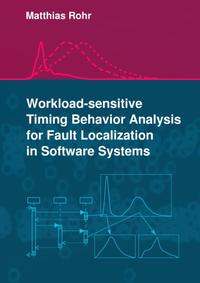
Software timing behavior measurements, such as response times, often show high statistical variance. This variance can make the analysis difficult or even threaten the applicability of statistical techniques. This thesis introduces a method for improving the analysis of software response time measurements that show high variance. Our approach can find relations between timing behavior variance and both trace shape information and workload intensity information. This relation is used to provide timing behavior measurements with virtually less variance. This can make timing behavior analysis more robust (e.g., improved confidence and precision) and faster (e.g., less simulation runs and shorter monitoring period). The thesis contributes TracSTA (Trace-Context-Sensitive Timing Behavior Analysis) and WiSTA (Workload-Intensity-Sensitive Timing Behavior Analysis). TracSTA uses trace shape information (i.e., the shape of the control flow corresponding to a software operation execution) and WiSTA uses workload intensity metrics (e.g., the number of concurrent software executions) to create context-specific timing behavior profiles. Both the applicability and effectiveness are evaluated in several case studies and field studies. The evaluation shows a strong relation between timing behavior and the metrics considered by TracSTA and WiSTA. Additionally, a fault localization approach for enterprise software systems is presented as application scenario. It uses the timing behavior data provided by TracSTA and WiSTA for anomaly detection.